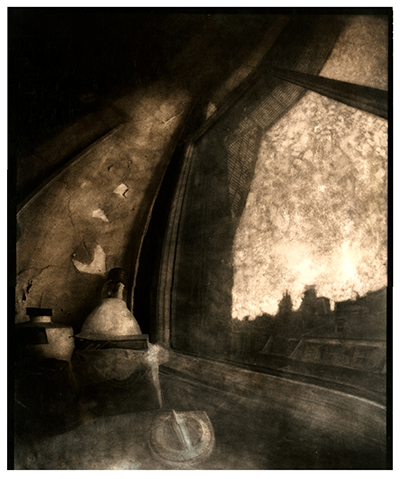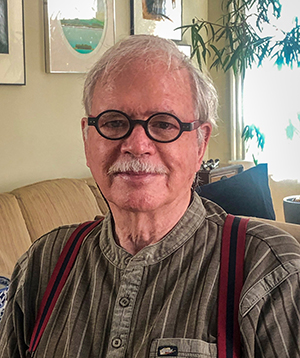
Workshop details: The English scientist, Sir David Brewster, coined the name, Pin-hole photography in the 1850’s to describe image making with a lens-less camera. Photographers, artists and scientists have rediscovered lens-less photography as a tool, which allows them to explore ideas and spaces, which no other means of image making has yet been able to achieve.
The purpose of the workshop will be to construct one or more pinhole cameras. The cameras can be constructed from light tight containers such as cardboard or tin boxes or cylinders. Ready-made containers such as Atloid or cookie tins, Quaker Oats or whisky cardboard cylinders or boxes make fine pinhole cameras. Participants will also have the opportunity, if they choose, to build cameras from scratch, using materials such as 4ply cardboard sheets, tape and glue. Since this a virtual workshop there will not be access to a central darkroom, therefore, the instructor, Walter Crump, will assist in making pinhole negatives with those who do have access to a darkroom. Those that don’t have access to a darkroom will be able to make a Solargraph image. (Solargraphy is the art of long exposure photography that captures the image of the sun moving across the sky). Workshops such as this, generally involve participants exploring unique solutions and diverse tactics. Hence the workshop will be loosely structured and each participant will be assisted in the individual directions they take. individually. If there is time and interest there will be an exploration of strategies to turn the cameras into art objects/assemblage.
Supply list: Various light tight boxes to make cameras, these can be square, rectangle, round, or odd shaped. They should be able to contain a sheet of 5” x 7” to 8” x 10” paper negative (black & white developing paper). The sub-straight of the container/s should not be so thin that light can sine through it. Optional: broken or discarded 35m or 120 film cameras. If you want to make a pinhole lens for a functioning SLR, Medium Format or digital camera with removable lens, you will need the appropriate camera cap. Additional materials: Aluminum from a soda can, cut into small 1’ x 1’ squares, sewing needles of various sizes (to make the pinhole), wine cork (for holding the needle), fine sand paper or emery cloth, small piece of foam core, thick cardboard, (approximately 3’ X 3”) or a cutting matt. (foam core is recommended), black flat spray paint, aluminum foil tape, matte knife (box cutter), scissors, straight edge ruler, (suggest 18” to 24”), black and white photo paper – – 10 sheet packs of 8” x 10” or 25 sheets package of 6” x 7”. Illford Multigrade V RC is the most accessible brand and pearl surface is recommended. You can find it at Hunts Photo in Boston, or B & H photo, Adorama, Freestyle or Amazon on line. Also, you will need a dark place to load your camera such as a closet or a dark basement.
IF YOU ABLE TO WORK IN A DARKROOM you will need trays, developing chemicals, safe light etc. A contact printer, if you would like to make contact prints from a paper negative. (or two sheets of glass clamped together).
TURNING YOUR CAMERA INTO AN ASSEMBLAGE: Use your imagination; paint, spray adhesive, shellac, collage materials, thread & twine, discarded paintings drawings, whatever.

About the instructor: After all his camera equipment was stolen in 1985, Walter Crump made his first pinhole cameras. He is attracted to alternative ways in which pinhole cameras see the world. His largest body of work consists of pinhole cityscapes, an ongoing series he calls The Bent Cities Project. Crump’s work has been exhibited throughout the US, Canada, Europe, Pakistan, and Vietnam and he is the recipient of many grants and awards. From 1991 – 1993, he was a Fulbright Scholar in Pakistan. His work is included in numerous private and public collections including: Philadelphia Museum of Art, National Museum of American Art (Smithsonian), Fogg Art Museum, and the National Museum of Fine Art, Hanoi.
